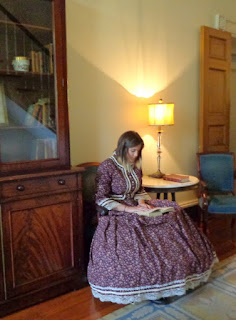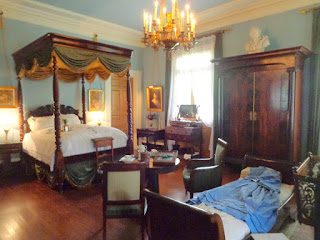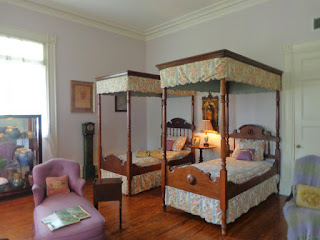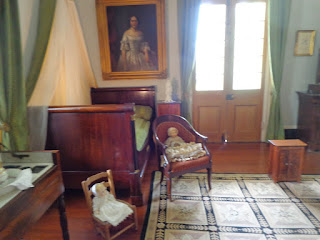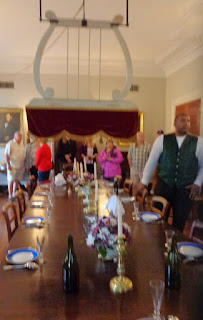Saturday 29 April 2017
Fort Worth Amon Carter Gallery The Invented Worlds of Valton Tyler
Fort Worth Kimbell Art Museum
The Kimbell is a typical american museum. Big modern gallery by great architect, in this case Louis Kahn and. for the new block, Renzo Piano architect of the Shard. Inside relatively few well spaced works, Lady Lever or Dulwich Gallery they are not, usually of one of everybody. In this case sometimes two, three for Picasso.
They have Michelangelo's earliest extant work allegedly painted whenhe was 12 or 13.
Smithville
In Houston for the Menil collection, no pictures, but just if you are ever within say 500 miles it's worth the detour to see it. An outstanding collection.
On the long drive north though Texas we stopped for lunch at the little town of Smithville with its "historic" centre and then on to Austin the music capital where even the supermarket had a band.Thursday 27 April 2017
The Jungle Gardens of Avery Island
I am surprised that Monty Don does not include this as one of his 60 great gardens of the world.It comprises 125 acres which you can drive round built on a salt dome in the swamp. As you drive round it looks like a natural landscape but it is a carefully constructed garden with canals and lagoons to drain parts , protect rare native and exotic aquatic plants, and provide a habitat for the abundant wild life. The planting is of southern wild oaks and indigent species together with many "exotic" species, many as is typical of late 19C gardens introductions from China. There is a Wisteria arch, a Holly arch, Bamboo stands, a Palm garden, thousands of Azaleas, and 600 varieties of Camelias. None of these were in flower when we visited so it was what Madre calls "just a green garden" but it was still stunning.
The island is owned b the Tabasco Sauce family, the factory is just nearby, and in 1895 Edward Mcilhenny hosted a British former Indian administrator who told him about a Maharajah who had built a magnificent aviary of rare species at his Palace. The Maharajah had died and the aviary slowly rotted away but the birds stayed and thrived so that you could visit the ruinous palace and see flocks of exotic birds.
At that time the snowy egret was being hunted for its plumage and was near extinction. McIlhenny decided to see if the Maharajah effect could work deliberately. He managed to capture eight wild egrets and put them in an aviary on the island. When they had raised their hatches and were ready to migrate he freed them. The next year all the offspring returned , and every year since and now egrets and heron return in their thousands and roost on metal shelf -like perches
The gardens are also home to deer, alligators,possums,armadillos,nutria ,racoons and bobcats although all we saw was a squirrel. A Treasure.
Shadows on the Teche
New Iberia has its own ante-bellum house called Shadows on the Teche. We did the tour but weren't allowed to take photos inside. It was much better value than Oak Alley being half the price and there were no costumed docents just an elderly lady guide who was very, very knowledgeable. The Weeks family who built it were still occupying it when it was made over to the National Trust of America and they had kept all the documents bills and letters in boxes in the attic so they know more or less everything about it .
The Weeks family owned a plantation at Grand Cote 15 miles out of town but as his wife felt isolated there David Weeks bought the in town plantation and the built the house. The plantation was very long and narrow, big enough to employ 180 slaves but only 2 blocks wide. All the New Iberia Plantations were like that because it gave them all 2 blocks worth of access to the Bayou Teche which was the only feasible method of transportation. The summerhouse marks the site of the landing stage where if they wanted to go into New Orleans the river steamer would stop and they could make the 3 day ,2 night journey.
The roof water was collected for use because the river water is so muddy and stored in the "beehive" cistern
Sadly the David Weeks never moved in dying in 1834 in New York where he had gone for medical treatment whist Mary moved in with the children. She later remarried Judge John Moore who was important in State politics and signed the Louisiana secession from the Union.
The house survived because after the war William Weeks sold much of the town plantation for development as the town expanded and spent much time at the Grand Cote plantation where he continued to employ his freed slaves who worked 10 hour days except Sunday, 18 in the sugar cooking season for housing , board and $8 pm.
Tuesday 25 April 2017
A Robicheaux Trail
I had always thought that New Iberia was like Stephen Booth's Edendale, a fictional town set in a real landscape, but when we got the Louisiana map there it was! A real place! Of course we had to visit.
We started a Books on the Teche which has a good stock of signed James Lee Burke's first editions, Robicheaux and others. We were 3 weeks too late for the annual Robicheaux Festival but Beloved got the Tshirt.
We went round town trying and often failing to find the sites from the books despite the useful guide but we did see East Main Street
"one of the most beautiful streets in the old south or perhaps the whole country" A Stained White Radiance.
And St peters Church where Annie Robicheaux is buried in Heaven's Prisoners.
And had lunch at Victor's Cafe Dave's favourite lunch place where he sometimes takes prisoners.
Sadly the Rayou Teeche Museum was closed because New Iberia's other famous son is George Rodrigue famous for his Blue Dog paintings and one had been returned home to the museum to much local pride. We had seen one of his sculptures at the NOMA sculpture park.
Oak Alley
We left New Orleans heading west along the river road. The road is famous for having a number of restored anti-bellum plantation houses along the route. Those on our side of the river were about a mile apart and seem to have belonged to the same extended families. We visited Oak Alley named for the 300 year old oak avenue leading up from the river. Nobody knows who planted them or when but the purpose appears to be to create a wind tunnel of cooler air from the river.The house only dates from the late 1830s so although it is considered very old by american standards in a british context it is Victorian rather than Georgian.
There were about 120 slaves working the associated sugar plantation and in the house and some of the slave quarters were reconstructed using traditional methods to make double quarters each cabin divided into 2 with a family of 6 or more in each side.
There was quite a reasonable exhibition of the type of crops the slaves would grow. They had to work 10-12 hour days, 18 during the sugar harvest, but were not fed so that each slave family would have an allotment garden to feed themselves Any surplus could be sold and they could keep the proceed and then perhaps invest it in raising chickens.
Jaques Roman the owner only manumitted one slave whom he had inherited from his aunt at her request. Although he was free his wife and children remained enslaved. Eventually he raised $350 to purchase his wife's freedom but not his children and it is thought He died on the plantation aged over 100.
Jaques built the house for his wife Celina but nver lived there dying in 1839. His eldest surviving son was nine and Celina a New Orleans socialite spent much time in town leaving an overseer to run the estate by the time the son took over in 1861 the estate was heavily indebted and although he at first halved the debt in 2 years the war and emancipation finished the finances and the banks forclosed. The plantation land was sold on but the house lay derelict until the Stewart family bought and restored the property in the 1920s.
The house is open by guided tour with docents dressed in period costume.
I was amazed by how small it was only eight rooms, 4 up 4 down, not what you expect in a british stately home. The house has been used as a set for several films, most noticeably as Brad Pitt's home in "Interview with a Vampire".
The dining room features the original fanpowered by a small boy slave in the corner tugging on a rope.
Subscribe to:
Posts (Atom)





